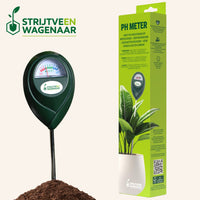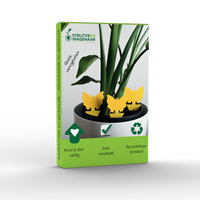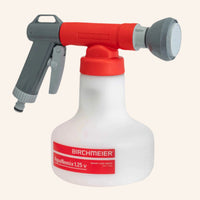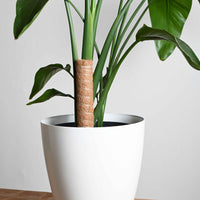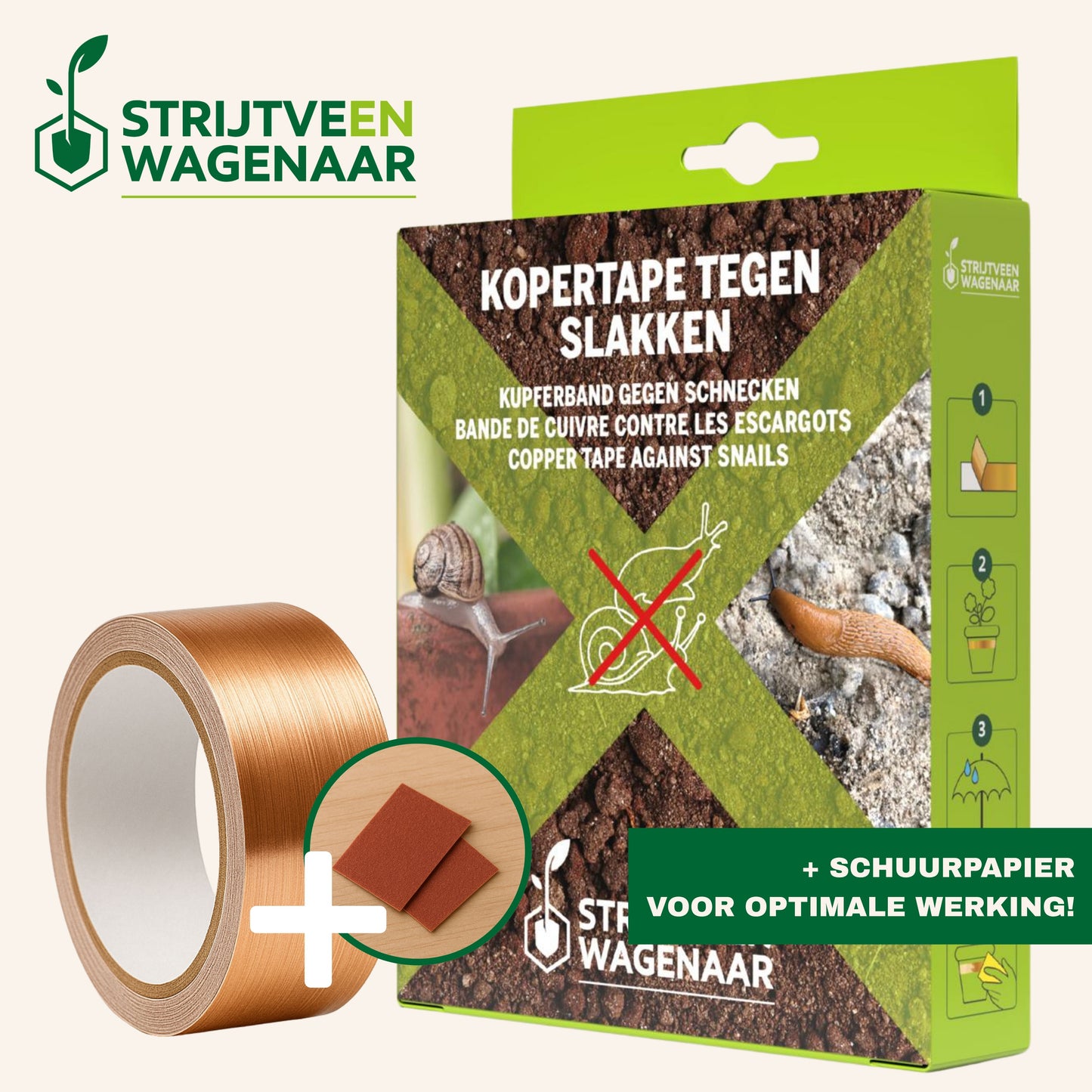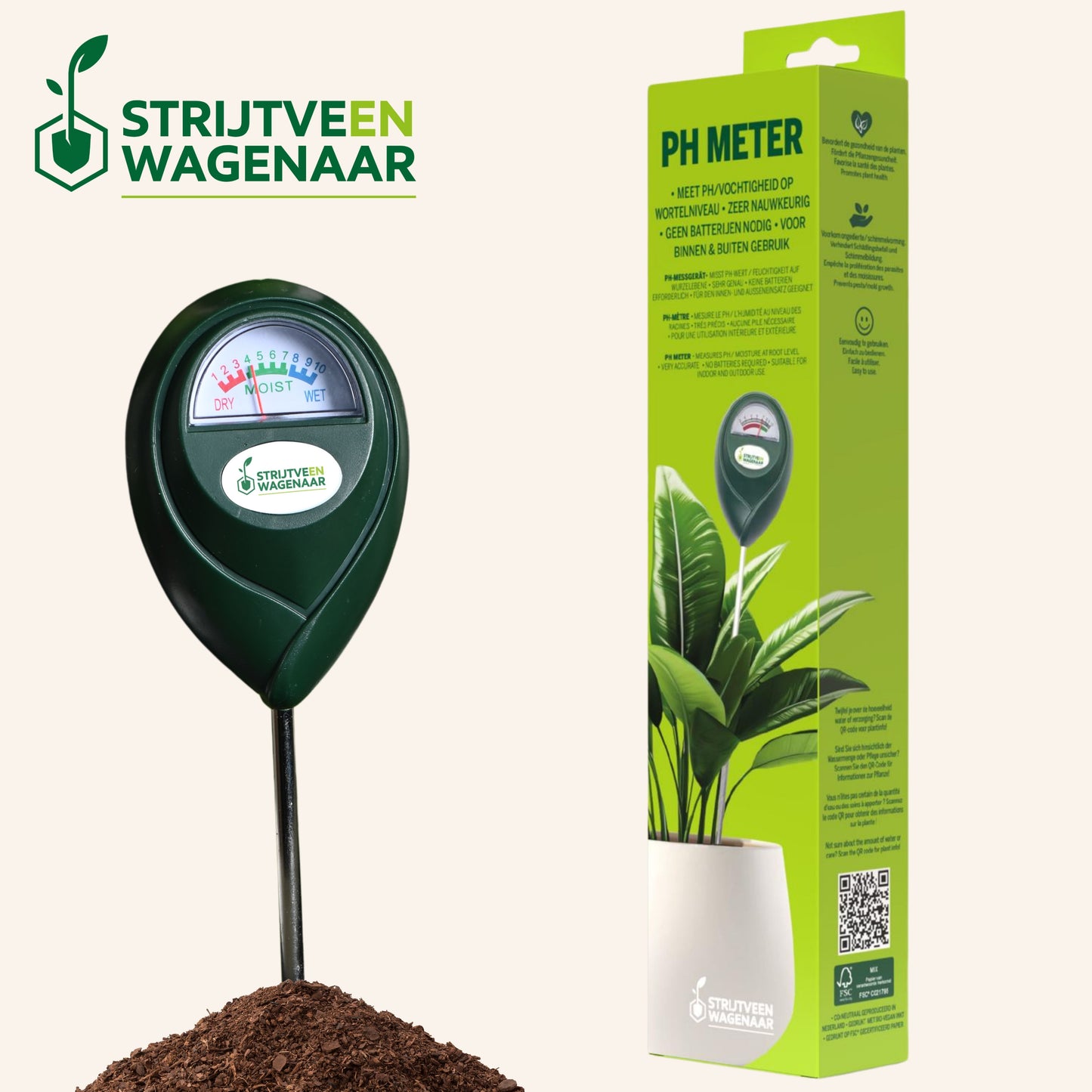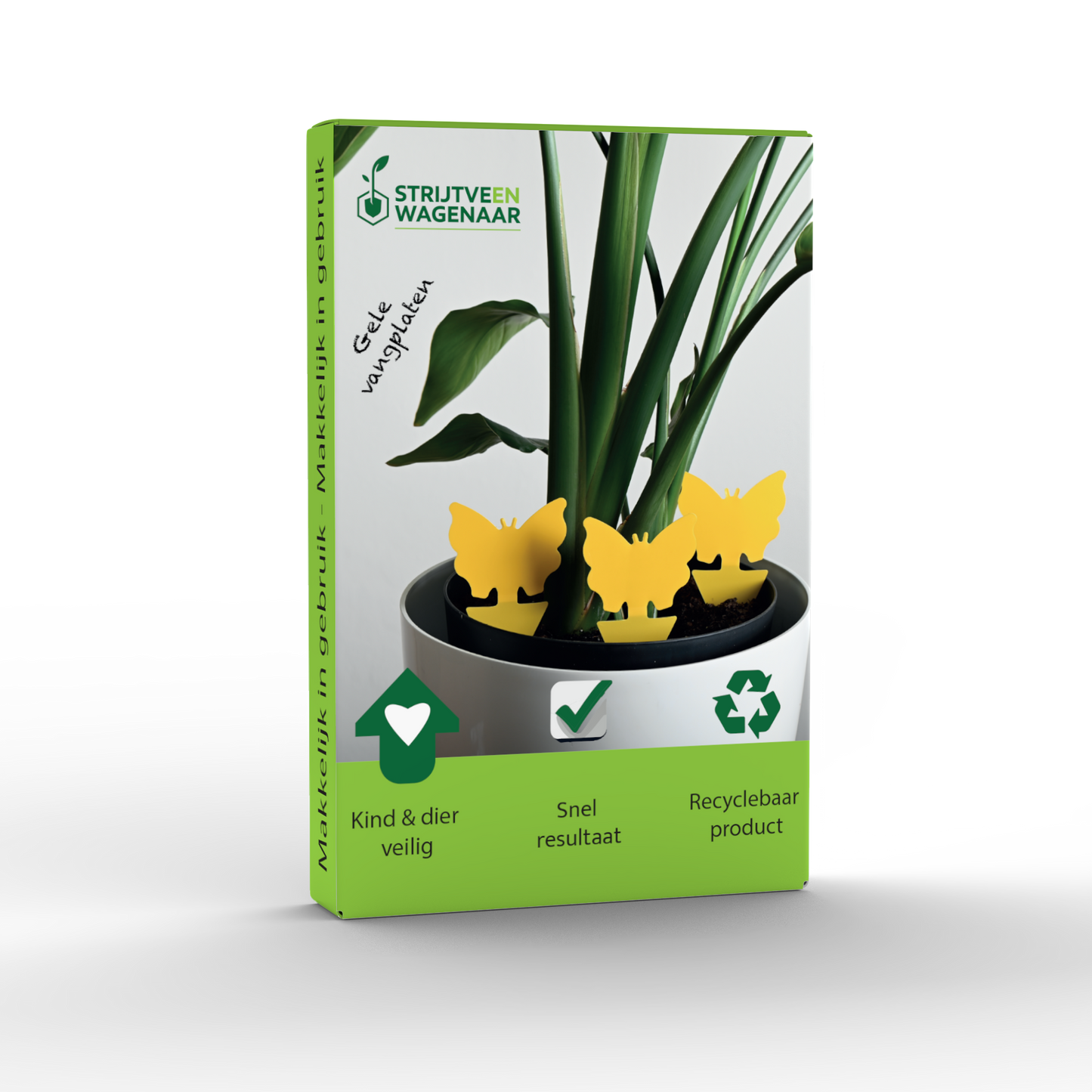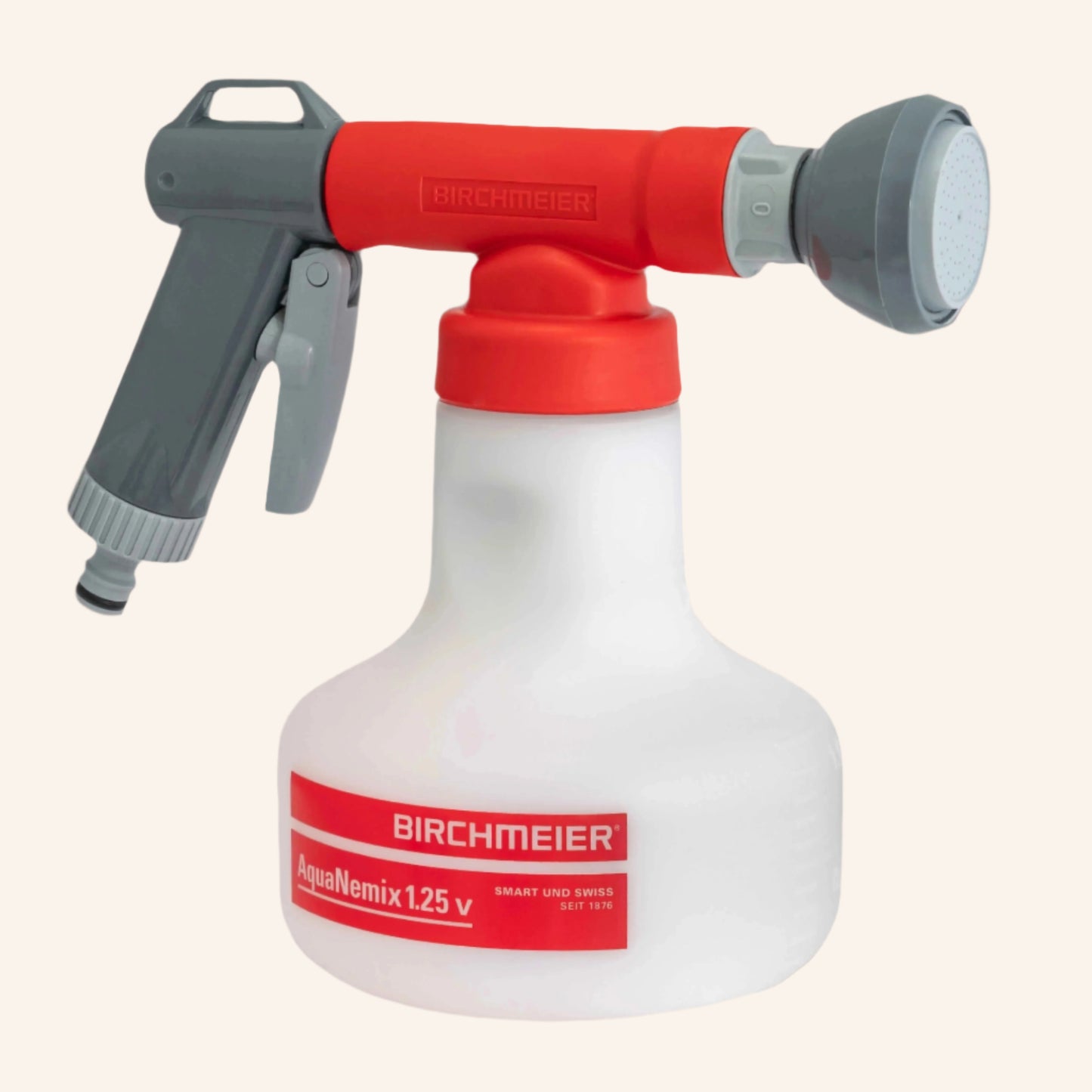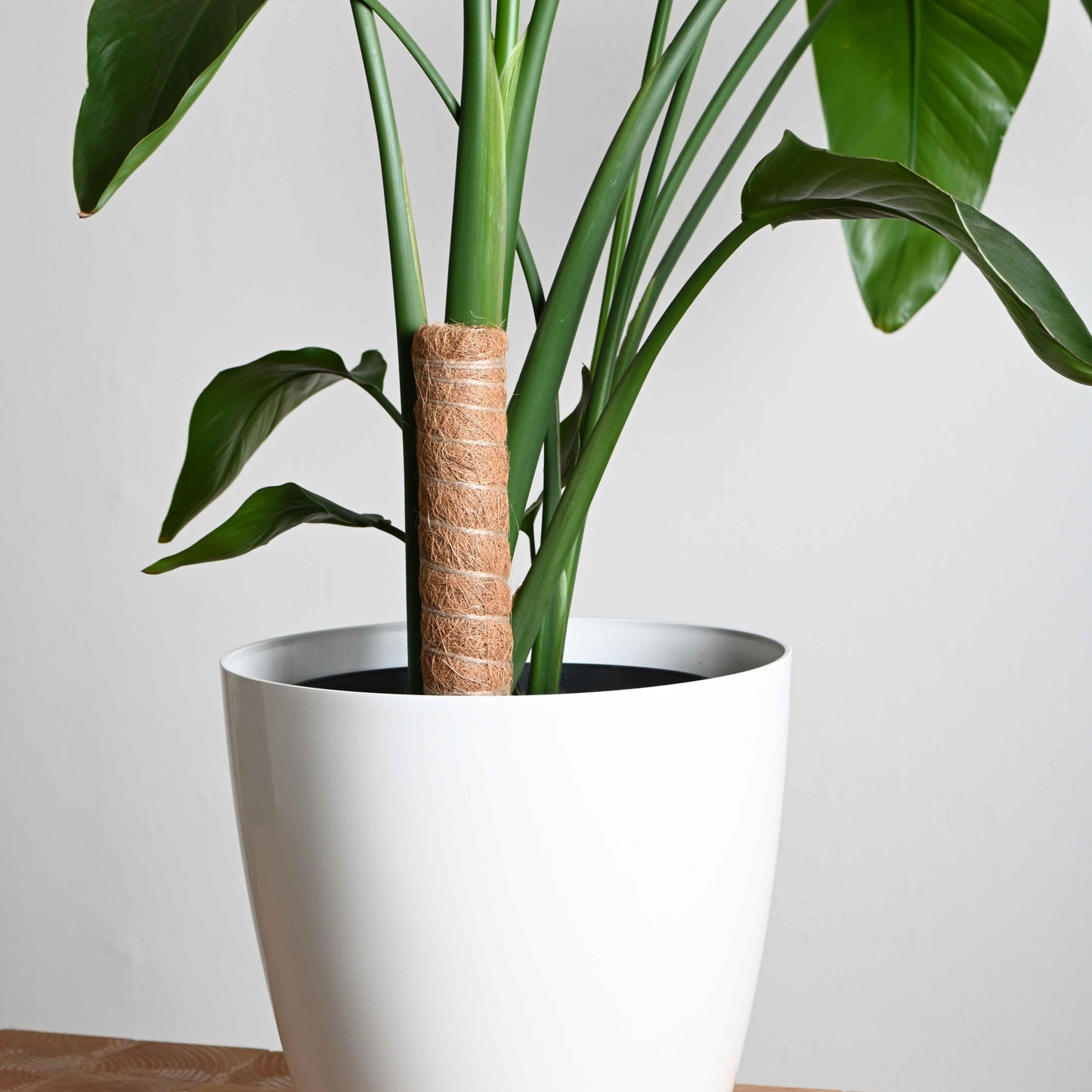
In this extensive blog we delve deeper into the world of nematodes; the natural enemies of various pests in nature. But what exactly are nematodes and how do they work? Find out here, together with an overview of their benefits, tips for choosing the right species, and a guide for effective use. Learn all about this environmentally friendly and targeted method of pest control, and discover how you can optimally use nematodes for a healthy and natural garden.
What are nematodes?
Nematodes, also known as nematodes, are microscopic organisms that play a crucial role in the natural control of garden pests. These beneficial creatures effectively tackle garden pests such as snails, grubs, and leatherjackets. Nematodes work biologically and naturally , penetrating the pests and stopping the damage they cause to your plants. They are completely safe for people, pets, and the environment, making them a popular choice for sustainable gardeners. Thanks to their adaptability, nematodes can survive in a variety of environments and are ideal for use against pests in lawns, vegetable gardens, and flower beds. With nematodes, you can keep your garden healthy and pest-free, without the use of harmful pesticides.

The nematodes are delivered in a sachet as a kind of powder. Please note! Nematodes are a living product and are "activated" when mixed with (lukewarm) water.
How do nematodes work?
Nematodes combat pest insects with a smart and effective strategy. As soon as you introduce nematodes into your garden or vegetable garden, they immediately get to work. They navigate through the soil, actively searching for harmful insects such as grubs, leatherjackets and other pests that damage your plants. Once they reach their prey, they penetrate the insect and start their biological control.
The secret of nematodes lies in the bacteria they carry. Once they penetrate their prey, they release these deadly bacteria. These bacteria spread rapidly through the body of the pest insect, causing the insect to die. The nematodes then feed on the dead tissue and multiply, ready to attack new pests.
What makes nematodes extra special is their natural balance with the environment. As soon as there are fewer pest insects, the nematodes also decrease in number. They eventually disappear on their own, without leaving any damage in your garden. This makes nematodes a safe, sustainable and extremely effective solution for pest control.
Benefits of nematodes at a glance
- Environmentally Friendly: Nematodes are a 100% natural method of pest control and leave no damage to the environment.
- Targeted action: They only target specific pests, such as grubs and leatherjackets, without affecting other beneficial organisms.
- Safe for people and pets: Nematodes pose no risk to your health or that of your pets. Read more here .
- No residue: They leave no harmful residues on crops or in the soil, which is ideal for organic (vegetable) gardens.
- Natural cycle: Nematodes work completely in line with the ecological system and use natural mechanisms to tackle pests.
- Effectiveness against underground pests: They are particularly effective against insect larvae and other pests that live underground.
- Little chance of resistance: Because nematodes take physical action, the chance of resistance developing in pests is virtually zero.
- Not possible to overdose: It is not possible to administer too many nematodes, so you can get started without any worries.
- Killed insects are reused: Dead insects that have been attacked by nematodes remain in the garden and can be eaten by other animals, such as birds or hedgehogs, thus maintaining the natural cycle.

No worries for (domestic) animals or children, because nematodes are completely safe!
Choose the right nematodes
Nematodes come in different types, each with their own specialty. Whether you are suffering from pests in the garden, on the lawn or even in the house, there is always a suitable nematode solution. Discover below which nematodes you need for your situation!
In the garden
Cutworm , Box tree moth , Ants , Woodlice , Snails & Slugs , Yew & Snout Beetle and Ticks & fleas
On the lawn
Leatherjackets , Grubs and Mole Crickets
In house
Store the nematodes correctly
Store the nematodes in the refrigerator. The freezer is not suitable for this. Keep a close eye on the expiration date. The sooner the nematodes are used, the more effective they are.
Please note! Nematodes can be stored in the refrigerator for approximately 7 days. Even when mixed with water, the nematodes have a limited shelf life. So only order the nematodes when you actually need them.
Nematodes vs pests manual
Would you prefer the manual as a PDF? Download it here and have all the information at hand!
1. Protect your nematodes from UV light
Did you know that nematodes can't stand UV light? If you use them on a sunny day, they lose their power.
*Tip: Apply the nematodes in the evening or on a cloudy/rainy day!
2. Check the soil temperature.
In heated greenhouses and conservatories the nematodes can be applied all year round. See below if you want to apply the nematodes outside.
|
Type of nematode |
Suitable soil temperature |
|
Phasmarhabditis Californica |
(5-30˚C) |
|
Heterorhabditis Bacteriophora |
(12-33˚C) |
|
Heterorhabditis Downesi |
(5-28˚C) |
|
Steinernema Carpocapsae |
(8-22˚C) |
|
Steinernema Feltiae |
(8-33˚C) |
Check the current soil temperature here according to the KNMI
3. Make sure the soil is moist.
Moisten the surface to be treated before and after applying the nematodes. The surface should be kept moist for up to 3 weeks after treatment.
4. Mix the contents of the sachet with water.
Dissolve the contents of the package in lukewarm water (15-20°C). Mix the contents of the entire bag with 1 litre of water, regardless of the amount of nematodes in the bag. Rinse the bag, otherwise nematodes will remain in the packaging. Stir until the contents of the entire bag have dissolved in the water. Let this stand for about 15 minutes. You have now prepared the concentrate. You can also mix the concentrate with soil water .
5. Now mix the concentrate with water.
For every (m²) 1 liter of water must be added. For a surface of 10m² you need 10 liters of water. For a surface of 50m² you need 50 liters of water etc.
6. Spray the concentrate over the desired surface/plants.
You cannot administer too many nematodes to a plant. Also, nematodes are not harmful when a plant is not affected by nematodes. So if you have any concentrate left, you can distribute it evenly over the plants to be treated, or administer it to your other plants to be on the safe side.
Frequently Asked Questions
Do you have any questions about nematodes or how to use them best? Here you will find answers to the most frequently asked questions!
When will I see results?
After 2 to 4 weeks the results will start to become visible, and after about 6 weeks the plague should be largely gone. Patience is important, but the nematodes are doing their job!
Do I need to do a second treatment?
After about 4 weeks you can judge if a second treatment is needed, as you should see results. If the infestation is not yet fully under control, a retreatment can help for optimal results.
How long do nematodes survive in the soil?
Nematodes usually remain active in the soil for a few weeks to a few months, depending on conditions such as humidity and temperature. Once the infestation is under control, the nematodes will naturally diminish because their food source has disappeared.
Can I safely use nematodes indoors?
Yes, nematodes are safe to use in the home. They pose no risk to people or pets and can be used effectively against pests such as fungus gnats. Just make sure you use them correctly and follow the instructions!

